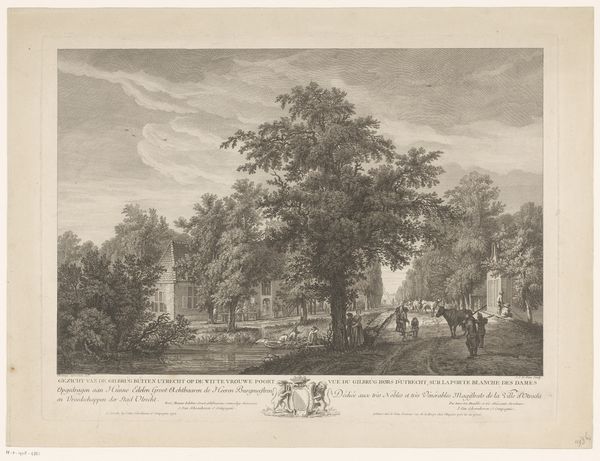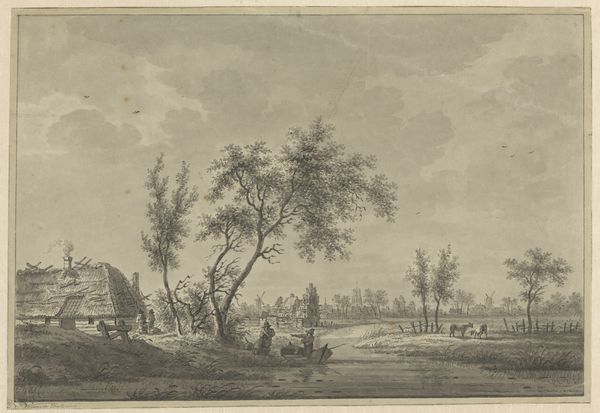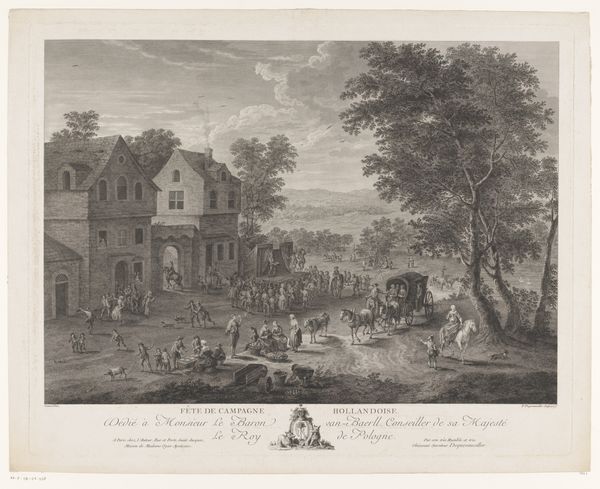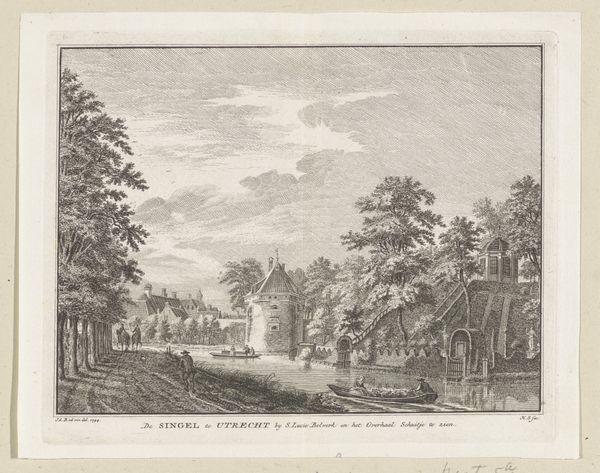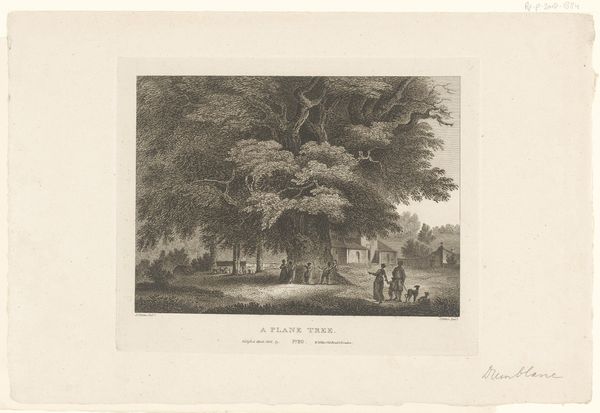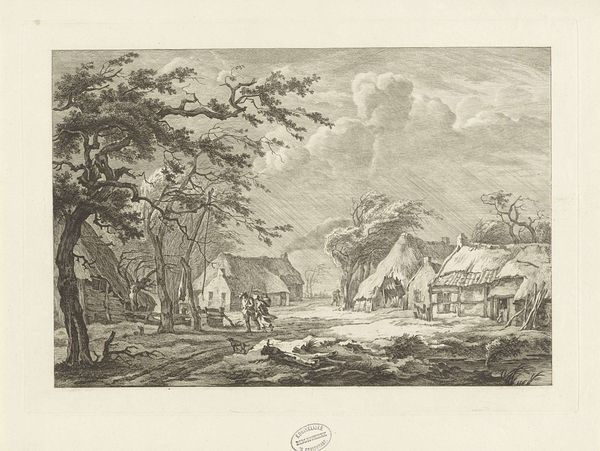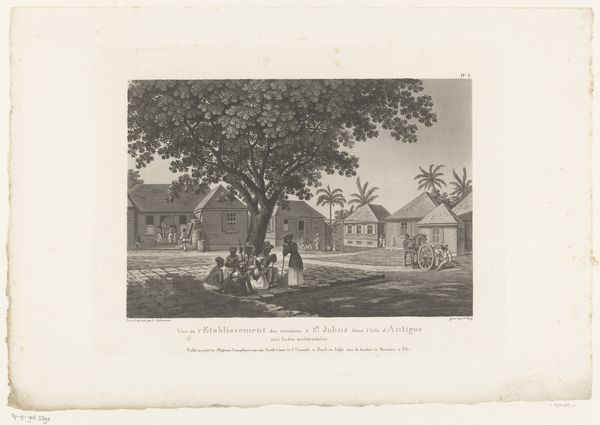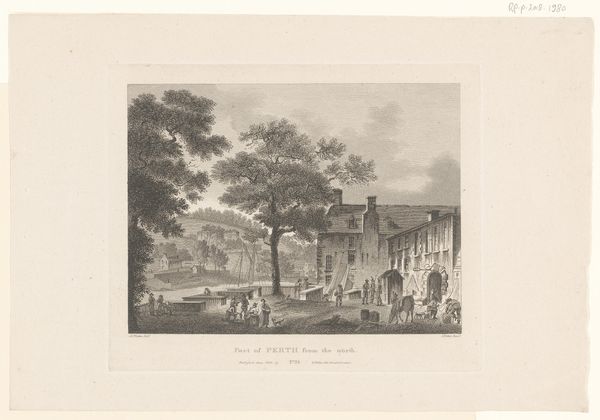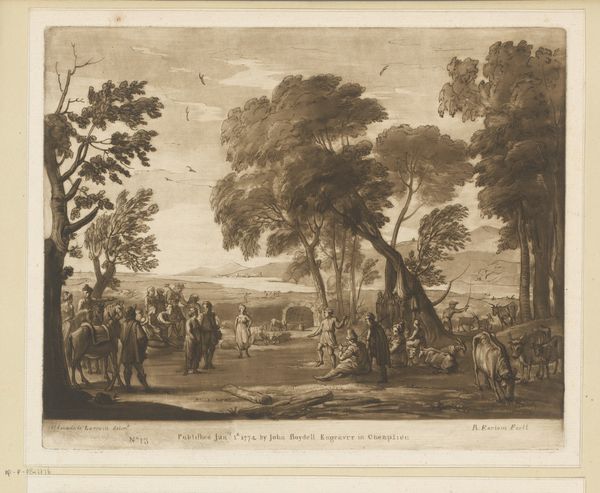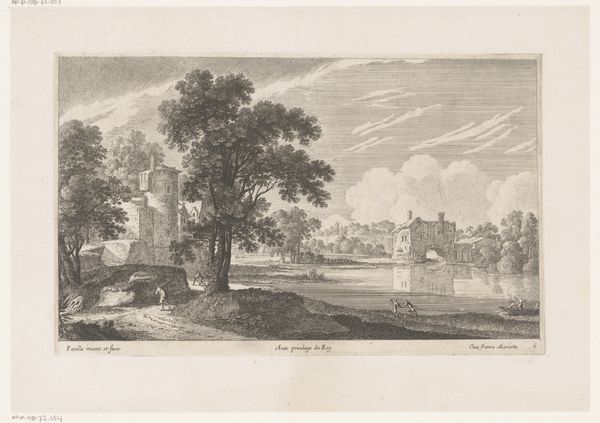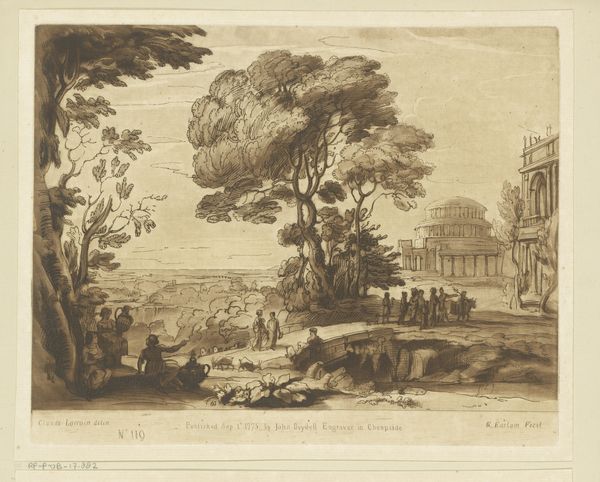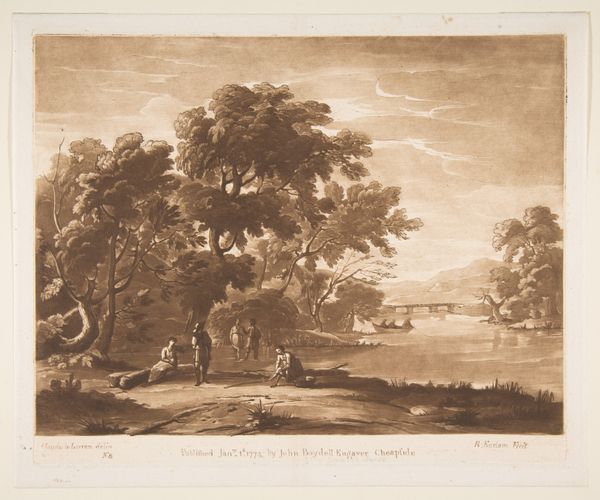
print, etching
# print
#
etching
#
landscape
#
etching
#
genre-painting
#
rococo
Dimensions: height 225 mm, width 293 mm
Copyright: Rijks Museum: Open Domain
Curator: This is "Gezicht op het veerhuis in Krimpen aan de Lek, 1756" a print by Paulus van Liender, likely completed around 1763. It captures a scene in Krimpen aan de Lek, showcasing daily life with impressive detail, etched into the print medium itself. Editor: The first thing that strikes me is how… tranquil it feels. The soft gray tones and intricate details make the scene almost dreamlike, like a memory fading at the edges. Curator: That's an interesting interpretation! I think it's important to view this image through the lens of Dutch social history of that time. The location, Krimpen aan de Lek, would have been a vital trade point, a meeting place for different social strata. Editor: Ah, so the ferry house itself wasn’t just a building, but a symbol of connection and commerce. All those people gathered around. I'm immediately drawn to the light – how it captures the essence of community in this space. The symbolism within its walls makes for a fascinating visual study of Rococo aesthetics. Curator: The etching as a medium is vital here. Liender was incredibly skilled with his line work. Look how he represents depth and light using these fine lines. The church tower and windmill serve as civic symbols but, also stand in contrast with all the figures at the center. Editor: I hadn't even noticed them at first; the group is bustling with life and gives us a feeling of observing this little event right in the space itself. Each figure is placed with intention and I think tells a little narrative within this small village in the Rococo era. Curator: You’re absolutely right! Those minute narratives are exactly what gives these prints their charm and historical value. They capture an authentic vision of the era’s culture. Editor: Seeing all of that carefully laid out in this picturesque ferry house transports the audience back to a quieter, more subtle period, far from modern landscapes! Curator: Precisely. And these humble observations are what transform art, offering historical insights, along with those initial emotions from its subtle symbolism.
Comments
No comments
Be the first to comment and join the conversation on the ultimate creative platform.
